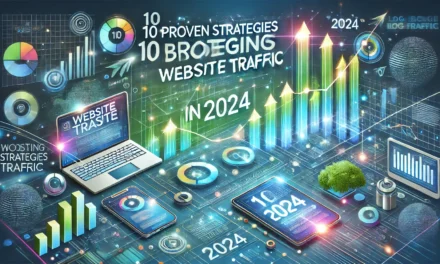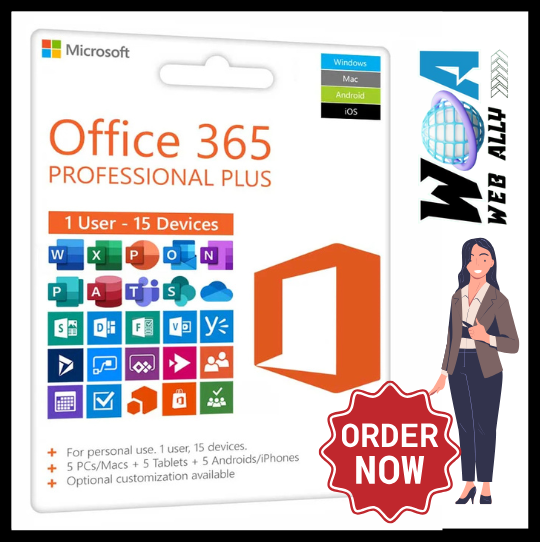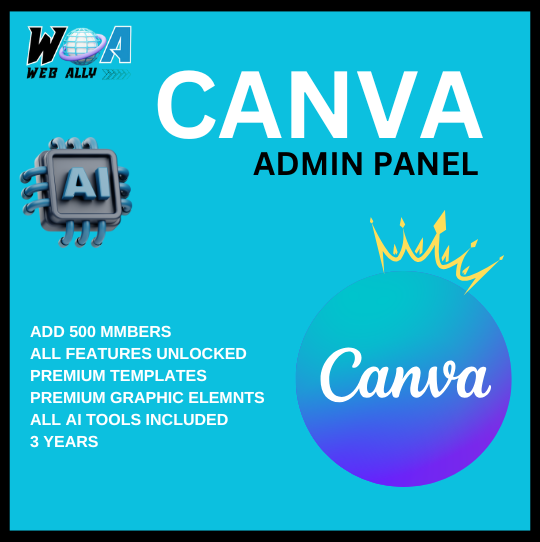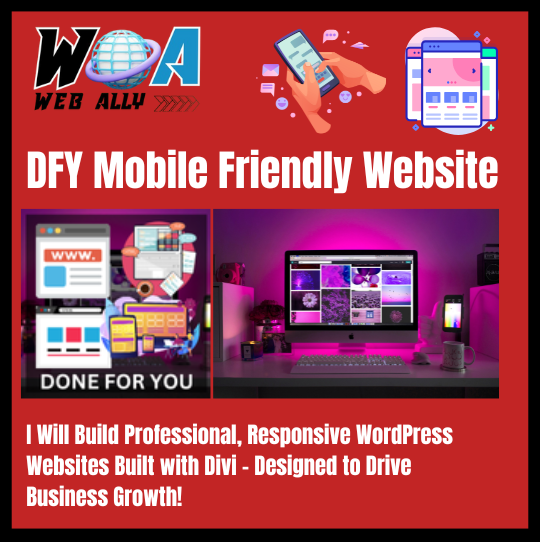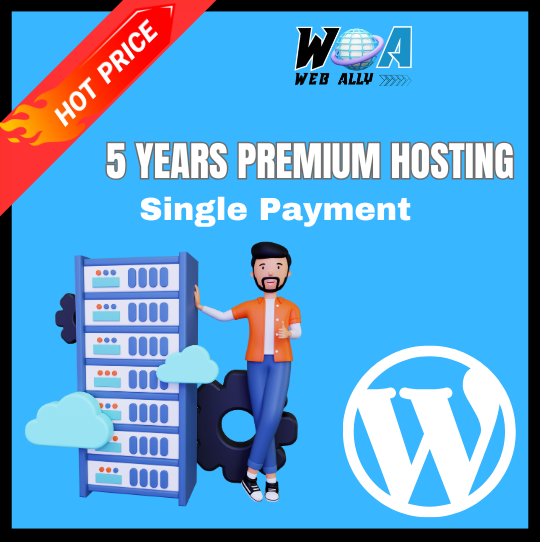In the ever-competitive world of online marketing, driving traffic to your website is crucial for business growth. While organic methods like SEO can yield great results, they often take time to show significant impact. This is where paid ads come into play, offering an accelerated route to boost website traffic and generate quality leads. By using paid ads strategically, you can achieve explosive website traffic growth in a relatively short period.
1. Understanding the Basics of Paid Ads
Paid ads are a form of online advertising where you pay to have your content shown to a targeted audience. Platforms like Google Ads, Facebook, Instagram, LinkedIn, and even YouTube offer various ad formats that can be tailored to meet your specific goals. The primary objective of paid ads is to increase visibility and drive traffic to your website, helping you reach potential customers who might not otherwise find you.
There are different types of paid ads, including:
- Search Ads (PPC): These ads appear on search engines like Google when someone types in keywords relevant to your business.
- Display Ads: These ads are shown on websites, apps, and social media platforms as banner images or videos.
- Social Media Ads: Ads run on platforms like Facebook, Instagram, LinkedIn, and TikTok, designed to target specific user demographics.
- Video Ads: Short video content placed on platforms like YouTube or social media, driving traffic through engaging content.
2. Set Clear Goals for Your Paid Ad Campaigns
Before diving into the world of paid ads, it’s crucial to have clear, measurable goals in mind. This ensures your ad campaigns are focused, and you can track their success. Some common objectives include:
- Increase website traffic: Attract more visitors to your site through targeted ads.
- Generate leads: Collect email addresses or other contact details from interested prospects.
- Boost sales: Drive immediate sales by promoting special offers or products directly on your site.
- Build brand awareness: Increase the visibility of your brand among your target audience.
Clearly defined goals will guide your choice of platform, targeting strategy, and budgeting decisions, allowing for a more effective campaign.
3. Choose the Right Ad Platform for Your Business
Not all paid ad platforms are created equal, and the right platform for your business depends on where your target audience spends their time. Here’s a breakdown of some popular platforms:
- Google Ads: Ideal for businesses that want to target users actively searching for specific keywords related to their products or services. Google Ads allow you to run search and display campaigns to capture demand at different stages of the buyer’s journey.
- Facebook & Instagram Ads: Perfect for businesses looking to target users based on demographics, interests, behaviors, and even custom data. Facebook and Instagram offer advanced targeting options, making it easy to reach specific niches.
- LinkedIn Ads: Best for B2B marketers, LinkedIn allows you to target professionals, decision-makers, and companies, making it a great choice for those in industries like SaaS, consulting, or finance.
- YouTube Ads: If video content aligns with your business, YouTube is a powerful platform for creating engaging ads that capture attention and drive traffic. Video ads can be shown before, during, or after other videos on the platform.
- Twitter & TikTok Ads: These platforms can also be useful for reaching younger demographics or building hype around a trending topic. Twitter offers sponsored tweets, while TikTok has in-feed ads and branded hashtag challenges.
4. Targeting the Right Audience
One of the main advantages of paid ads is the ability to precisely target your ideal audience. Most platforms offer targeting options based on:
- Demographics: Age, gender, income, job title, location, etc.
- Interests: Based on what users engage with online, including hobbies, entertainment preferences, or industry interests.
- Behavior: Previous online actions, like website visits, purchase history, or app usage.
- Custom Audiences: Upload your own customer lists or create lookalike audiences to reach users similar to your best customers.
By refining your audience targeting, you ensure your ads are being shown to the people who are most likely to click on your site and convert into leads or customers.
5. Crafting Compelling Ad Creative
Even with the right audience targeting, your ads need to grab attention and entice users to take action. Crafting compelling ad creative involves:
- Clear, Concise Messaging: Make sure your ad’s message is straightforward and speaks directly to the needs of your target audience. Focus on benefits and solve a problem they may have.
- Strong Call to Action (CTA): Your ad should include a clear CTA, such as “Shop Now,” “Learn More,” or “Sign Up Today.” A strong CTA tells the audience what to do next.
- High-Quality Visuals: Whether you’re using images, videos, or graphics, make sure your visuals are eye-catching and relevant to your message.
- A/B Testing: Test different variations of your ad creatives to see which performs best. Experiment with headlines, visuals, CTAs, and other elements to optimize your ads.
6. Set a Realistic Budget
Paid ads can quickly eat up your marketing budget if not managed effectively. Start by setting a clear budget for each campaign and allocate it across different platforms based on their effectiveness. Begin with a smaller budget to test different targeting options and creatives, and scale up the budget for ads that are delivering a good return on investment (ROI).
- Cost Per Click (CPC): In pay-per-click advertising, you pay for each click on your ad. Make sure you know your cost per click and adjust your bids accordingly.
- Cost Per Acquisition (CPA): Track the cost of acquiring a customer through your paid ads. This metric helps you determine the profitability of your campaigns.
7. Analyze, Optimize, and Scale
Once your campaigns are live, it’s essential to regularly monitor and analyze the results. Track key performance metrics like:
- Click-Through Rate (CTR): The percentage of people who click on your ad after seeing it.
- Conversion Rate: The percentage of visitors who take the desired action, such as signing up for your newsletter or making a purchase.
- Return on Ad Spend (ROAS): The amount of revenue generated for every dollar spent on ads.
Use this data to optimize your campaigns. If certain ads aren’t performing, adjust the targeting, creative, or budget allocation. Over time, as you find what works best, you can scale your campaigns to reach an even larger audience, leading to even greater traffic growth.
Conclusion
Leveraging paid ads for explosive website traffic growth requires a combination of strategy, creativity, and ongoing optimization. By understanding the fundamentals of paid ads, setting clear goals, choosing the right platform, and consistently analyzing your campaigns, you can drive a significant amount of traffic to your website. With careful planning and execution, paid ads can help you achieve rapid growth, increased brand visibility, and higher conversions.





